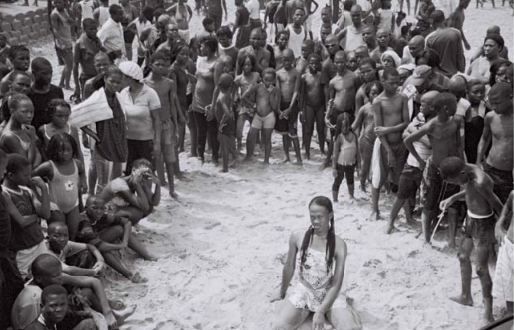My pick of the Bag Factory Auction
The Bag Factory 25th anniversary auction is a super exciting prospect as it only presents contemporary art lots and thus a great opportunity to see how this market is growing, who is collectable within it and what these kinds of works can fetch. Although as a fundraising initiative you can never be sure whether people are bidding due to benevolence or genuine interest. What I particularly like about auctions are the names that pop up; artists who have slipped off the radar despite having made an impact. It is in the auction setting that they make their comeback. Belinda Blignaut is one such artist; she was hot in the '90s and her wry pottery work in this auction is right on the money now with everyone getting into ceramic feminist art.
The Bag Factory, which has been an artist-centric institution providing spaces for artists to make art, is (has been) expanding its commercial aspects, so that it is less reliant on funding, according to the director Sara Hallett, whom I chatted to recently. They are able to do this because contemporary art has value and is fast becoming an asset class in this country. For this reason the Bag Factory participate in all the art fairs and run an extensive exhibition programme. Sales are as important to them as they are to any commercial gallery, though due to their location, in Fordsburg, buyers tend to be hardcore art supporters. Not just people out on the town for the night. I expect that's who will turn up on the night of the auction too. What kind of art do the hardcore art lovers want?
I regard myself as one; this is what I would be bidding on if my numbers came up in last week's Lotto:

Belinda Blignaut: When I Wake up with my Make Up (2016)

Dan Halter, Samizdat (2011). Halter is an auction favourite, but you don't always find a Halter-Halter work on them. I'm thinking now of that neon work at the Aspire auction, which was so unHalter. This is what you want; a deftly woven work in the Chinese-Carry-All bag vibe. A rewoven theoretical text is even better - will look good in a 'decolonised' collection.

Nicola Taylor, Pink Lagoon (2016). I will be honest I have never heard of this artist before. Based on her bio she studied in Italy and here before settling in the UK. She should have stayed here. Her style of painting would go down well in Cape Town where a group of young female artists are driving these neo-impressionist landscape works. Admittedly, I also like this work because I like pink. Sometimes our attraction to art is this basic. Why deny it.

Zanele Muholi, Le Sishi, South Beach Durban (2010). This is a very unusual Muholi. She tends to do staged portraits, aside from a series on Virgin-testing I have not seen her train her camera on live events. I don't know what is going on in this work - who is the woman, why is everyone staring at her and why are they positioned at a remove from her. I'd like to know more, though of course, the image obviously encompasses social alienation in the most overstated form. Muholi is such a big international art star that buying this work is sort of a no-brainer.

Roger Ballen, Assault (2012). Die Antwoord are so unpolitically correct you could almost lump them in with Trump, but for the fact that they know full well what they are doing and why they doing it. Ballen's association with them allowed him to feel a little cool for a little while exploring another level of African kitsch. This isn't the strongest photograph Ballen produced with the pop duo, but it could be quite nice to have, if only to mark a moment in pop culture and to own a Ballen, which is actually beyond the means of the average art buyer these days.

Nandipha Mntambo, Study I (2012). Why, oh why, is this on my list, you may ask? It is not very Mntambo and it seems pretty arb. For me this work marks an important transition that took place in SA art from identity-focussed art to abstraction and Mntambo, who was always interested in, and captured this space between genders, was like Hlobo, able to translate this and make this transition via her 'fur' language. This work was part of an abstract series where the flow and fluidity of identity could be represented without being represented. Ultimately, the act of representation was always limiting and presented an ideological cul-de-sac - it relied on visual markers - abstraction presented a way out. Mntambo did not go all the way down this road, like Hlobo. It was a shame, but this is why this work from that period and attempt seems all the more valuable now.



